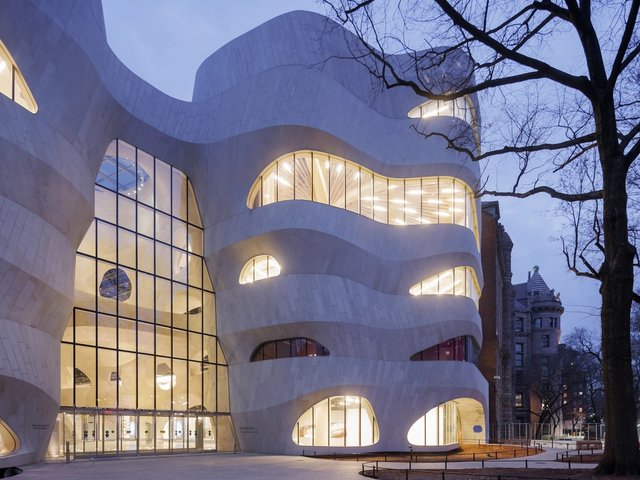The American Museum of Natural History (AMNH) has unveiled a transformative renovation of its Northwest Coast Hall, a $19m project developed over the last five years that aimed to recontextualise the exhibition with Indigenous perspectives and modernise the antiquated vitrines and architecture of the space, which last underwent a major refurbishment in 1910.
The renovation of the 10,200 sq. ft gallery, originally scheduled to open in 2020 but delayed by the Covid-19 pandemic, was overseen by Kulapat Yantrasast of Why Architects in collaboration with Lauri Halderman, the vice president of the museum’s exhibition department, and the curators Peter Whiteley and Haa’yuups (Nuu-chah-nulth), who worked alongside several additional consulting curators.
The updated exhibition represents ten cultures through more than 1,000 artefacts such as monolithic carvings, ceremonial regalia and woven objects, some of which have been conserved or replicated. The objects are divided between eight alcoves and four corner galleries, including two rotating galleries devoted to contemporary Northwest Coast artists.
The hall—the museum’s first gallery—was built in 1899 under the direction of the German American anthropologist Franz Boas, who conducted fieldwork with Indigenous communities of the Pacific Northwest in the late 1880s.
While most museums had previously organised their Indigenous collections by function or on a timeline from “primitive” to “civilised”, Boas made an argument for cultural relativism by grouping the collection by culture, stating that “ethnological collections should be the dissemination of the fact that civilisation is not something absolute”.
“Of course, Native people do not see these objects as ‘ethnological’ or ‘tribal’ collections, but rather as belongings or treasures that embody their ancestors’ presence, intentions, spirits and intellects,” Whiteley says, “belongings that in some instances were taken away in highly questionable circumstances.”
He adds, “While the hall transformed the ways people in metropolitan areas understood culture, it did not do this with Native American and Canadian First Nations perspectives on their own individual cultural histories, and this is what distinguishes the current renovation.”
The Great Canoe, the largest known dugout canoe, tied to both the Haida and Heiltsuk Nations, is a centrepiece of the new hall; it is suspended from the ceiling of the space, its intricate designs now fully visible. It is accompanied by expanded texts on Haida and Haíłzaqv design.
The temporary exhibition Living with the Sea explores the spiritual connection between Northwest Coast nations and the ocean. It includes drawings and a powerful sculpture by the Makah artist Greg Colfax KlaWayHee, Whaler’s Wife Transforming into a Whale (2018), which deals with the mythology of whaling Nations.
The years of the Northwest Coast Hall’s renovation coincided with a period when US museums and public art came under increasing scrutiny over the racist attitudes they reflected and, in some instances, perpetuated. A statue of US president Theodore Roosevelt that long stood on the AMNH’s front steps, depicting him on horseback flanked by shirtless Native American and African men on foot, was removed in January following years of campaigns and protests.






